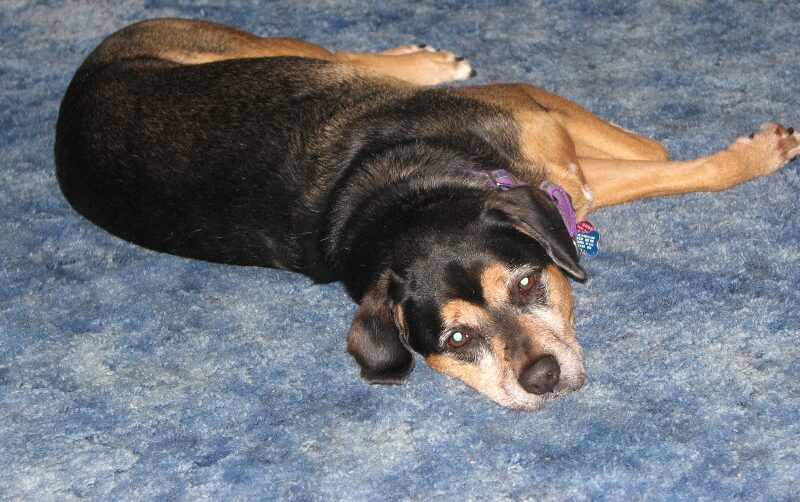Good footing will help your dog to recover more safely. The entire floor of the recovery room, and the route to the outdoor toilet area, should be non-slip as far as is possible.
Non-slip flooring solutions
Above: the local market can be a good place to buy large rubber-backed rugs or runners
Most laminate, wooden, tiled or vinyl floors are too slick for recovering dogs. Carpet is fine. Suitable surfaces feel quite grippy when you stand on them in socks.
If you floors are slick, then place enough non-slip matting to create a safe route from the crate to the outdoor toileting area, and to wherever else your dog may need to access.
Above: recovery is difficult if the floor is slick
If flooring is slick inthe recovery room, then cover as much of the room floor as possible with non-slip matting. If not possible to cover the entire floor, then at least put large pieces of matting in the key areas:
- next to your dog’s food and water bowls
- next to your dog’s bed
- underneath the dog’s bed, to stop it from sliding about
- next to the doorstep for toilet access.
Options include rubber-backed rugs or runners (try your local market), rubber bath mats or industrial-style matting. Some owners even use rubber matting designed for children’s play areas.
Above: “dust-trapper” type doormats can be useful for covering small areas of slick floor.
Above: Cheap rubber bath mats are less head-wearing but do provide grip. They can be useful, e.g. placed underneath the dog’s bed to stop it sliding about.
Above: various types of non-slip matting are sold by the metre or yard from flooring companies
Indoor “toilet areas”
Some owners cover part of the floor with either newspaper or incontinence pads in case their dog needs to pee unexpectedly. So long as the dog is taken outdoors for regular toilet sessions, then this is not usually necessary. If you do opt to put down paper or pads, keep them safe by putting non-slip matting directly underneath. Otherwise the paper or pads will slip about when stepped on.
For more information…
Try the following links for more advice on caring for your recovering dog:





Comments are closed